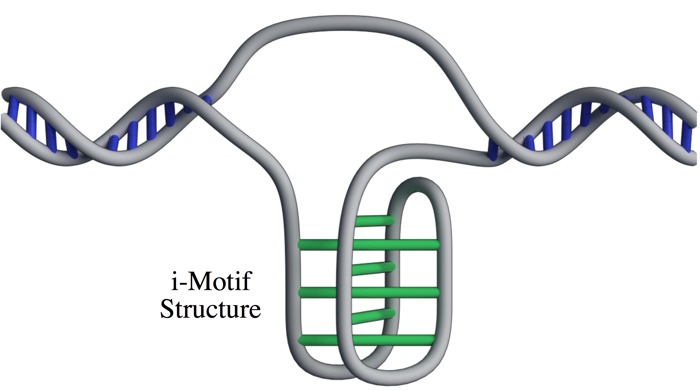
From Peter Dockrill at Science Alert:
For the first time, scientists have identified the existence of a new DNA structure never before seen in living cells.
The discovery of what’s described as a ‘twisted knot’ of DNA in living cells confirms our complex genetic code is crafted with more intricate symmetry than just the double helix structure everybody associates with DNA – and the forms these molecular variants take affect how our biology functions.
“When most of us think of DNA, we think of the double helix,” says antibody therapeutics researcher Daniel Christ from the Garvan Institute of Medical Research in Australia.
“This new research reminds us that totally different DNA structures exist – and could well be important for our cells.”
The new DNA component the team identified is called the intercalated motif (i-motif) structure, which was first discovered by researchers in the 1990s, but up until now had only ever been witnessed in vitro, not in living cells. More.
“crafted with more intricate symmetry”? Be careful, guys. Darwin Is Watching You. Let’s hope you’re not forced to emit some garbage that does not clearly follow from your findings, just to keep your job.
Paper. (paywall)
See also: Attempt to explain the assembly of the bacterial flagellum, “a complex process involving more than 70 genes”
and
Defending Intelligent Design theory: Why targets are real targets, probabilities real probabilities, and the Texas Sharp Shooter fallacy does not apply at all.